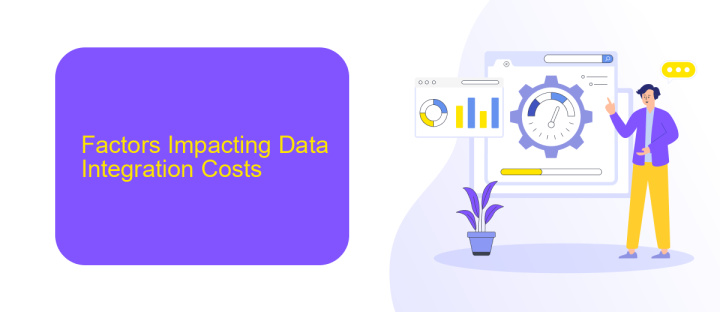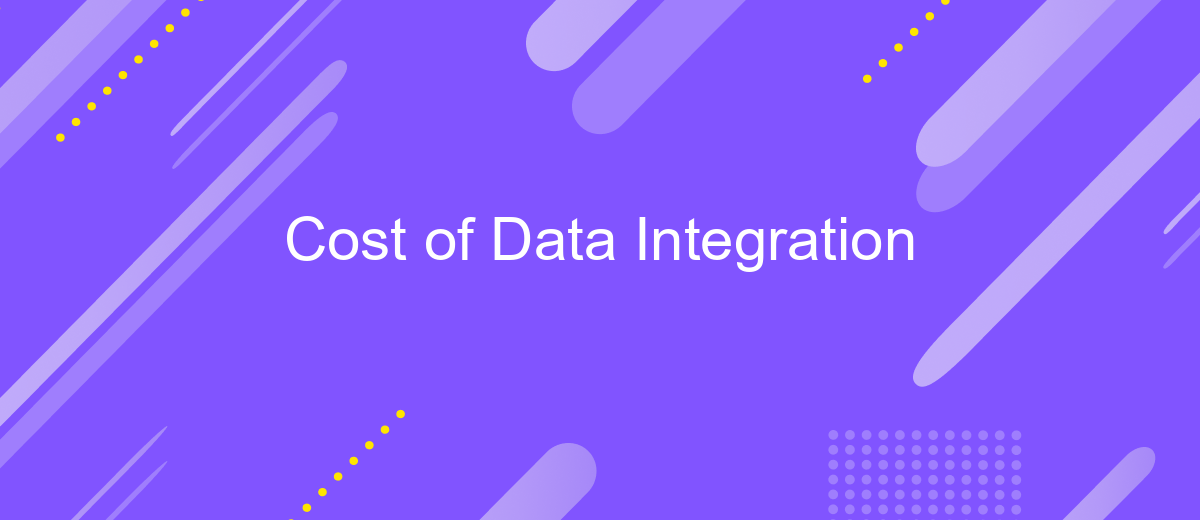Cost of Data Integration
In today's data-driven world, seamless integration of data from various sources is critical for business success. However, the cost of data integration can be a significant concern for organizations. This article explores the various factors that contribute to the overall expense, including technology, manpower, and time, and offers insights into how to manage these costs effectively.
Introduction
In today's data-driven world, the integration of disparate data sources is crucial for businesses aiming to leverage their data effectively. However, data integration comes with its own set of challenges and costs, which can vary significantly depending on the complexity and scale of the integration project. Understanding these costs is essential for making informed decisions and optimizing resources.
- Initial setup and configuration costs
- Ongoing maintenance and support expenses
- Costs associated with data quality and transformation
- Potential expenses for third-party tools and services
One of the ways to streamline data integration and reduce costs is by using specialized services such as ApiX-Drive. This platform offers a user-friendly interface and robust features that simplify the integration process, allowing businesses to connect various applications and automate data workflows without extensive technical expertise. By leveraging such tools, organizations can minimize both the time and financial investment required for effective data integration.
Factors Impacting Data Integration Costs

The cost of data integration is influenced by several key factors. One primary factor is the complexity of the data sources involved. Integrating data from multiple, diverse systems often requires more sophisticated tools and processes, increasing the overall cost. Additionally, the volume and variety of data can significantly impact costs, as larger datasets require more storage and processing power. Another critical factor is the level of data quality and consistency; poor-quality data necessitates extensive cleaning and transformation efforts, which can drive up expenses.
Moreover, the choice of integration tools and platforms plays a vital role. For instance, using advanced integration services like ApiX-Drive can streamline the process, potentially reducing costs by automating many of the manual tasks involved. ApiX-Drive offers a user-friendly interface and robust features that facilitate seamless data integration across various applications, minimizing the need for custom development and ongoing maintenance. Lastly, the expertise of the personnel involved and the time required to implement the integration also contribute to the total cost.
Cost Estimation Techniques

Estimating the cost of data integration is crucial for budgeting and planning. Several techniques can help organizations accurately forecast expenses and allocate resources effectively.
- Bottom-Up Estimation: This method involves breaking down the integration project into smaller tasks and estimating the cost of each task individually. Summing up these costs provides a comprehensive estimate.
- Analogous Estimation: This technique uses historical data from similar past projects to predict the cost of the current integration effort. It's useful for quick estimates when detailed information is unavailable.
- Parametric Estimation: This approach uses statistical models and historical data to calculate costs based on project parameters such as data volume, complexity, and integration tools.
- Three-Point Estimation: This involves estimating the best-case, worst-case, and most likely costs, then averaging these to get a more balanced estimate.
Using tools like ApiX-Drive can further refine cost estimations by automating data integration processes, reducing manual effort, and providing real-time cost tracking. These tools offer scalable solutions that can adapt to various project sizes and complexities, ensuring more accurate and efficient budgeting.
Optimization Strategies

Optimizing data integration processes is essential to reduce costs and improve efficiency. One effective strategy is to automate data workflows, minimizing manual intervention and human error. By leveraging advanced tools and platforms, organizations can streamline their data integration efforts.
Another key approach is to utilize scalable and flexible integration services, such as ApiX-Drive. This platform allows businesses to automate data transfers between various applications and systems without the need for extensive coding. It supports a wide range of integrations, making it easier to manage data flows.
- Automate data workflows to reduce manual tasks
- Utilize scalable and flexible integration services like ApiX-Drive
- Implement data quality checks to ensure accuracy
- Optimize data storage and retrieval processes
By adopting these strategies, organizations can significantly lower the costs associated with data integration. In addition, leveraging platforms like ApiX-Drive simplifies the integration process, allowing businesses to focus on their core activities while ensuring seamless data management.


Conclusion
The cost of data integration is a multifaceted issue that encompasses financial, technical, and operational considerations. As businesses increasingly rely on data-driven decision-making, the need for seamless data integration becomes paramount. The expenses associated with data integration can vary widely depending on the complexity of the systems involved, the volume of data, and the specific requirements of the organization. It is crucial for companies to carefully evaluate their needs and choose the most cost-effective and efficient solutions to ensure smooth data flow across various platforms.
One effective way to manage data integration costs is by leveraging specialized services such as ApiX-Drive. This platform offers a streamlined approach to connecting disparate systems, reducing the need for extensive manual coding and minimizing errors. By automating data integration processes, ApiX-Drive helps businesses save time and resources, ultimately leading to more accurate and timely insights. As technology continues to evolve, investing in robust data integration solutions will remain a critical component of any successful data strategy.
FAQ
What factors influence the cost of data integration?
Are there any ongoing costs associated with data integration?
What are the benefits of using a data integration service?
How can I estimate the cost of integrating multiple data sources?
What are some common challenges in data integration, and how can they affect costs?
Apix-Drive will help optimize business processes, save you from a lot of routine tasks and unnecessary costs for automation, attracting additional specialists. Try setting up a free test connection with ApiX-Drive and see for yourself. Now you have to think about where to invest the freed time and money!

